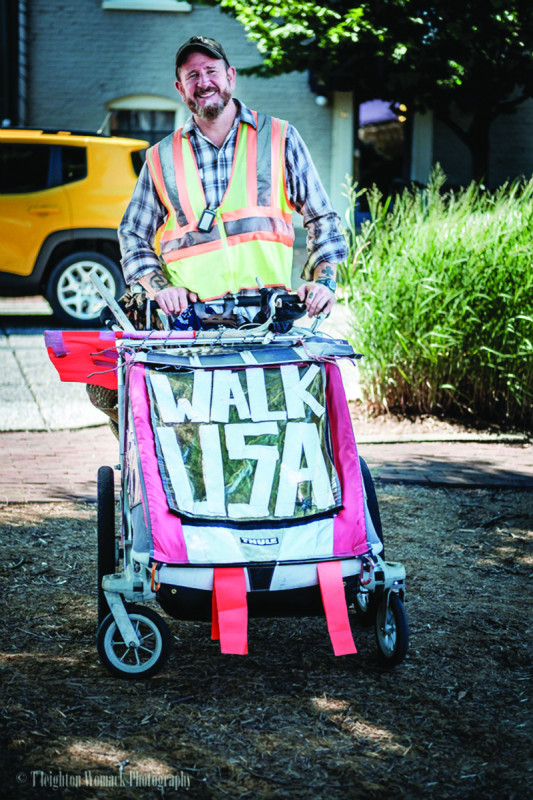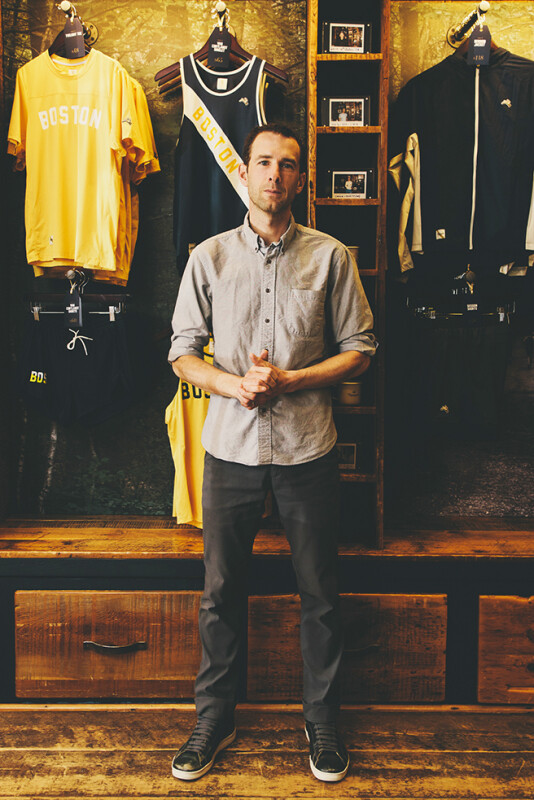How shall we define the coming year in run specialty retail? How about as a year of innovation and growth. That sounds about right after such a strange, terrifying, challenging but ultimately over-and-done-with pandemic year of 2020.
Many of us are revisiting what’s most important and reimagining our visions, mission statements and business models. We’re changing the specialty run game while tightening up what we believe in most strongly. In this regard, 2020 was a gift for which we all can be grateful.
Yes, I said it was a gift. Please bear with me.
Over the next year, this multi-part Leadership Series in Running Insight+ will highlight some small things that can lead to big results for run specialty retail. This is installment Number One.
Getting The Ball Rolling
Leader development and leadership development for run specialty retail are two similarly-sounding topics we toss around interchangeably. But there’s a significant difference between them. So before we dive too deep, let’s clarify:
- Leader development starts with a focus on skills, knowledge and abilities necessary for a specific role that involves guiding and inspiring people. Leader development puts an emphasis on self-reflection, identity awareness and self-regulation. It requires a keen grasp of one’s internal landscape. A store owner, in theory, fits perfectly into this leader box.
- Leadership development is something a leader likely works on, but one need not be a leader for it to be relevant. Leadership development focuses on building an individual’s capacity to predict, recognize and problem-solve unforeseen challenges. It requires acute attention to what’s going on in the external environment. A store’s GM, managers, shift leads and the like have leadership
Notice the difference? Leader development focuses predominately inward and asks questions such as: Who am I? What am I doing? Why am I doing it? Leadership development focuses outward and asks: What’s happening? Who needs my help? How can I make it work? The two concepts have different foundations, but they also inform each other.
The most effective and memorable store employees I’ve ever encountered display a coexistence of both leader and leadership qualities. They tend to be inwardly-focused and outwardly-capable. They shine a humble light and, by presence alone, raise the bar of everyone around them. They are inspirational and have palpable confidence. They are forthright. They can simultaneously self-reflect while offering smart solutions without missing a beat. Any run specialty shop would be thrilled to have a room-full of these folks.
Q: How do we replicate these all-stars?
A: By ensuring they get a regular dose of leadership development.
Q: How do we do that?
A: There’s no one perfect way. But we need to stop thinking and start doing.
First, Take Action
First and foremost, we must be relentless in our willingness to take leadership development by the horns. Too often we rely on time and experience to hone our team’s professional abilities. And sure, after a couple years of floundering many staffers develop high-quality leadership skills.
But this is not an efficient way to push the envelope, nor is it a fair environment to subject our people to. Most of us talk a good game about taking care of staffers, but how are we specifically proving our commitment to their ongoing development? Are we being relentless in our effort to make them better? If not, things must change.
Good intentions or not, training and development are often the first things to fall off the radar when stores get busy. And it make sense – I guess – it is easy to lose focus on something that’s working well enough.
I can’t lie, every year at The Running Event (well, except for last year, unfortunately) I hear the same repeated echoes regarding training and development.
We want to do it more.
We don’t do it enough.
We started strong but ran out of steam.
Yadda yadda, blah blah, same ol’ same ol’. These excuses are tired and old and it’s time for the industry to step things up. We may be a community of moms and pops, but we are also professionals. Though we’ll never be able to pay our best staffers the green paper they deserve, the least we can do is make sure we prepare them for their future success. Don’t we owe it to them to guide them towards excellence? I say yes.
Recommit to Your Leaders
We must reset our commitment to leadership development. Take a moment to say, loud and proud, something like, “Starting right now, I will never again take staff development for granted!”
Our intention to grow people personally and professionally, our willingness to do so, and our execution thereof must hereafter be – dare I say it again – utterly and completely relentless.
We must start and never stop. We must be continuous and persistent. We must move steadily and unabated as we charge ahead with training and development initiatives as if our lives depend on it. Our livelihoods darn sure do.
So now you’re pumped up and ready to rock. What now? Just like any race, you need a starting point.
To inspire outward excellence, you’ll harvest an honest inward assessment. Get your people talking about how and why they behave the way they do. When folks can name the reasons for their tendencies, they’ll have a better chance of leaning into or away from them.
A conversation about past influences, good or bad, is always a great way to get wheels turning.
Practice Self-Awareness, Start Story Telling
Individual leadership styles are a conglomeration of interactions with family, teachers, coaches, bosses, mentors and possibly even random strangers.
I suggest you start with this simple activity: Ask everyone on your team to reflect back on people in their life who’ve made an impact on them, then have them share their story. Have them explain how and why this person from their past continues to affect them. I’ll get things rolling with a couple stories of my own:
When I was in the Army I took a part-time job as a gas station attendant. The manager was an Air Force veteran who insisted all employees show up for their shift with shined shoes and a crisply ironed shirt and trousers. Wasn’t much different that my day job. He required us to wash every customer’s windows, literally and figuratively. Make sure you wash their windows became synonymous with going the extra mile. Thirty years later I can still hear his gruff voice asking me if I washed the red Civic’s windows — and even though it was pouring down rain, I knew what he meant. These days I am reminded of his work ethic any time I think about quality customer service. He altered my perception of leadership.
Another quick one:
Years ago I took over a sinking run business and spent the next two years working 100-hour weeks trying to revive it. At some point in my brief tenure a long-time mentor called me on the shop landline at 11:00 p.m.
“I knew I’d find you at work,” he said.
“Yeah. Lots to be done here still,” I replied.
He paused. The moment seemed to last forever.
“You do realize there’s no longevity in these hours you are keeping, don’t you?” he said. “If you’re not careful, you’re going to burn out. Your people need the freshest you at all times — are they getting that?”
He was right. I was a depleted version of myself and I did indeed burn out. I learned the lesson he was trying to teach me, but not before throwing in the towel after all my effort. He, too, changed how I view leadership.
Start your 2021 leadership training with self-reflection and storytelling. The reward is two-fold: The inward-looking will raise each staffer’s self-awareness, and their story told aloud will deepen connections between them and anyone fortunate enough to hear it.
When people start to understand what makes them innately tick, the stage is set for them to start naming traits and characteristics they believe are important and necessary for quality leadership. And this is where we’ll pick up in the next edition of this leadership series.
TO BE CONTINUED…







